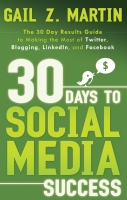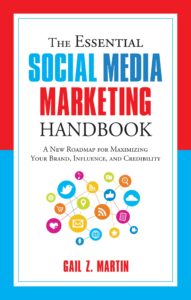 by Gail Z. Martin excerpted from 30 Days to Social Media Success
by Gail Z. Martin excerpted from 30 Days to Social Media Success
Take a hard look at your existing site. Is it outdated? Is your photo and bio current? Does it showcase your most recent accomplishments and accolades? Do you have badges for Facebook, Twitter and LinkedIn to help your web visitors meet you on social media?
A great way to get twice the impact out of your writing time is to have your blog and your Twitter page feed content to your homepage. That way, every time you post a new blog or Tweet, your home page gets updated content. Your home page always looks fresh, and search engines like sites that are frequently updated. It’s a winning solution!
You can also embed YouTube videos or posts from Instagram, Tumblr or Flickr photos into your web site. This is another great way to get more productivity out of your social media time by making each element work for you in multiple places. The YouTube videos you create with your cell phone won’t look studio quality, but that’s OK. If your content is good and the short videos are lively and packed with personality, viewers will have the feeling that they’ve met you, which is a great way to take the online relationship one step forward.
Audio is another way to personalize your site and let visitors get to know you. AudioAcrobat.com is one of my favorite tools because it’s easy to use and versatile. You can record a personal web audio so that you greet every visitor to the site, and then easily add the audio to your home page. Consider having a different personal audio greeting for every page. (Remember—you can add a link to the audio on your Facebook page and in your Twitter bio as well!)
If you’ve always wanted to be on the radio, consider doing a podcast. A podcast is a lot like a radio show, except that it is recorded, not live, and is broadcast via the Internet. Podcasts can be anywhere from five minutes to two hours in length (I’d suggest fifteen minutes or less). You can record a daily tip or insight, or invite guests like a radio interview. Podcasts can also be fed to your web site (and to your other social media sites as well), creating yet another interesting element, and an additional way for prospects to get to know you. It doesn’t require a lot of equipment or technical knowledge to podcast, but it can be a great cross promotional tool as well as a way to connect with a broader audience and share your expertise.






